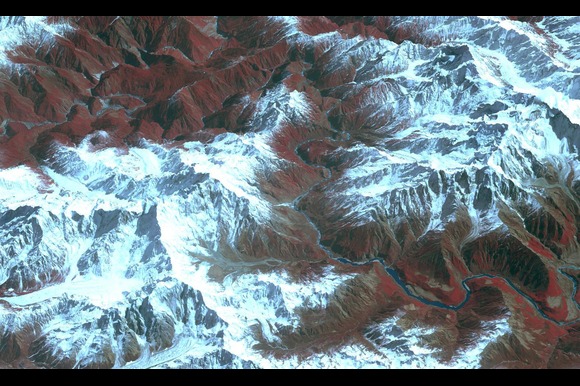China: Chinese authorities have launched construction on what is expected to become the world’s largest hydropower dam, located in the ecologically fragile and politically sensitive Tibetan region. The massive project has drawn sharp concerns from neighboring India and Bangladesh due to its potential environmental, humanitarian, and geopolitical consequences.
On Saturday, Chinese Premier Li Qiang oversaw the ground-breaking ceremony of the dam being built on the Yarlung Tsangpo River, according to Chinese state media. Flowing from the Tibetan plateau through several South Asian nations, the Yarlung Tsangpo is of vital significance to millions who rely on its waters downstream.
Named the Motuo Hydropower Station, the $12 billion yuan ($1.67 billion; £1.25 billion) development is set to surpass the iconic Three Gorges Dam in scale. Once completed, it could generate three times as much electricity, marking a significant milestone in China’s energy strategy. Beijing has stated the project will emphasize ecological protection and support local development. However, critics warn of potentially disastrous effects on the surrounding environment, the livelihoods of Tibetans, and water security in India and Bangladesh.
Experts and regional leaders have raised alarms over China’s increased ability to manipulate the river’s flow. The Yarlung Tsangpo becomes the Siang upon entering India’s Arunachal Pradesh, then merges into the Brahmaputra and eventually into Bangladesh’s Jamuna River system—key water sources for both countries.
A 2020 report from Australia’s Lowy Institute warned that China’s control over Tibetan rivers gives it a strategic “chokehold” over India’s economy. Arunachal Pradesh Chief Minister Pema Khandu, in an interview with PTI earlier this month, expressed deep concern about the dam’s impact, saying the Siang and Brahmaputra rivers could “dry up considerably” after completion.
Khandu called the dam an “existential threat” to indigenous tribes in the region. “If China builds the dam and suddenly releases water, our entire Siang belt would be devastated,” he said. “In particular, the Adi tribe and similar groups would see their land, homes, and even lives destroyed.”
India’s central government has voiced concerns to China over the project’s downstream implications and has proposed a hydropower dam of its own on the Siang River to act as a safeguard against sudden water discharges and to reduce flood risks.
Bangladesh has also raised objections. In February, Bangladeshi officials reportedly sent a formal letter to Beijing requesting more transparency and technical information about the dam’s impact. The project’s location, in a steep and remote Tibetan canyon, has long attracted China’s interest for its hydropower potential.
The dam is being constructed at a location where the Yarlung Tsangpo makes a dramatic U-turn around the Namcha Barwa mountain—a geological feature known as the “Great Bend”—and experiences a significant drop in elevation. Chinese engineers reportedly plan to tunnel through the mountain, creating multiple 20-kilometre-long channels to divert the river’s flow and power five cascading stations.
A report by China’s state news agency Xinhua over the weekend confirmed that these tunnels and “straightening” efforts would be key to the dam’s design. Electricity generated from the project will largely be transmitted out of Tibet to energy-hungry cities in eastern China, although the plan also includes some provision for local energy needs.
This project aligns with President Xi Jinping’s “xidiandongsong” strategy, or “sending western electricity eastwards,” a national policy aimed at exploiting western China’s natural resources—especially from Tibet—to fuel development in the east.
Chinese authorities have framed the dam as a clean energy initiative that will benefit both the environment and Tibet’s rural communities. However, activists and human rights groups argue that such developments represent a deeper pattern of state-led exploitation of Tibet and its people.
Protests have been met with repression. Last year, hundreds of Tibetans were arrested or beaten during demonstrations against a separate hydropower project. Verified footage obtained by the BBC confirmed the use of force, with several individuals reportedly sustaining serious injuries.
Environmentalists have also raised red flags over the project’s potential to flood valleys rich in biodiversity and the risks of building massive infrastructure in a seismically active zone. The Tibetan Plateau is crisscrossed by earthquake fault lines, making large-scale construction particularly hazardous.
Despite Beijing’s assurances of ecological consideration, the hydropower project has further intensified regional tensions and sparked renewed fears over water security and sovereignty in South Asia.






